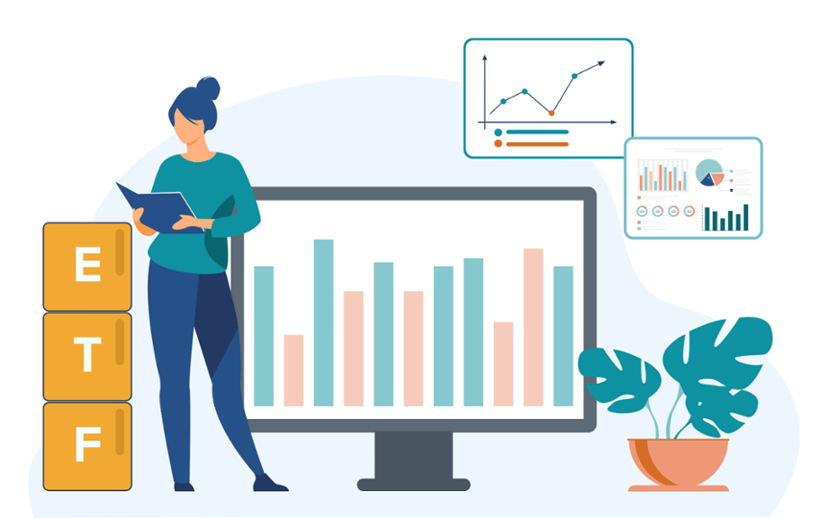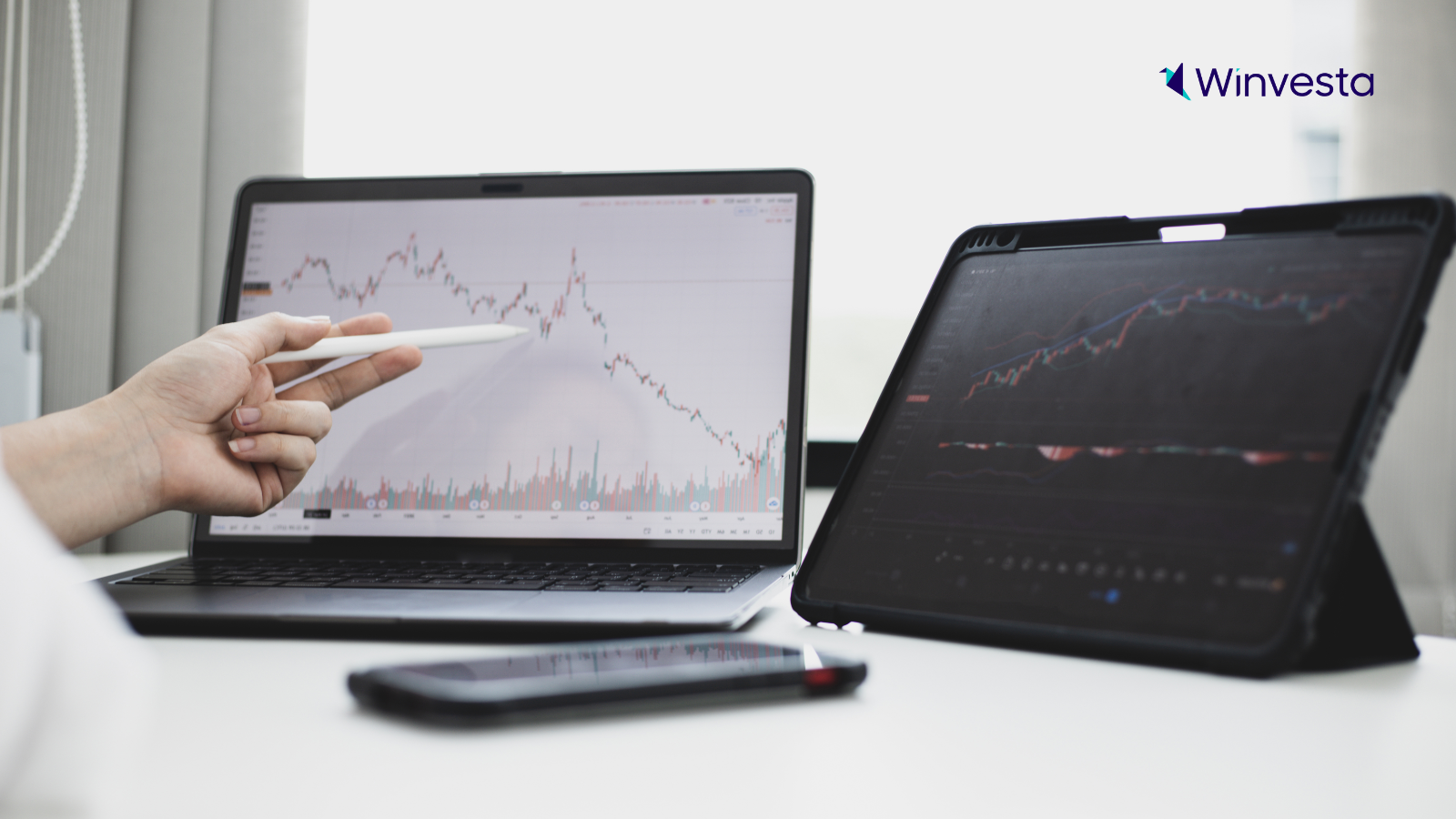Contents
Investing In US Stocks Through ETFs
4 minutes read
13 May 2024

There has been a significant increase in opportunities for Indian investors to diversify their portfolios abroad. If you are one of them, then one of the biggest attractions overseas is likely the US stock market.
But you either don’t have enough time, or the experience, to select stocks and build a portfolio yourself. Does that mean you shouldn’t consider investing in the US markets? No!
An easy way to invest in US stocks is through ETFs.
What Is An ETF?
An Exchange Traded Fund, also known as an ETF is a collection of various securities that often track an underlying asset, a sector, or an index.
Stocks, bonds, commodities – most of these asset classes have multiple ETFs tracking them. There are even ETFs that provide exposure to US treasuries.
Also, read why investing in US-listed ETFs is better than investing in Indian ETFs tracking them.
Advantages Of An ETF
Liquidity
Unlike Mutual Funds, ETFs trade on the stock exchanges and can be bought and sold through the day. They have higher liquidity, which means the bid/offer spreads are tighter.
Costs
Before we get to the cost aspect, let us learn more about expense ratios. An expense ratio is an annual fee a fund charges to cover its expenses. For example, if an ETF has an expense ratio of 0.20%, it means the fund uses 0.20% of the assets to cover the expenses of the ETF. Different funds tracking the same index can have different expense ratios. In comparison to mutual funds, ETFs have much lower expense ratios. That is also because ETF holders are owners of their own securities and are not managed by a professional fund house.
Diversification
You can choose to invest in ETFs of various asset classes, sectors, and themes. If you like a theme to invest in, chances are, there is already an ETF for it. Index ETFs track a particular underlying index. There are also various sectoral ETFs that track particular industries, sectors, and regions.
Disadvantages Of An ETF
ETFs have a fee that investors need to pay. Although most ETFs have a low expense ratio structures, many have a fee as high as 1%. Also, if you don’t like exposure to certain stocks in an ETF, there is no way to remove them. This offers less flexibility than building your own portfolio.
Index ETFs
In this article, we will focus on Index ETFs. An index ETF tracks the performance of the underlying index. They are also known as index trackers.
The US market is tracked via three major benchmark indices – the S&P 500, the Dow Jones, and the NASDAQ Composite. Here are some major ETFs tracking these indices, through which you can invest in US markets without doing a stock selection.
S&P 500 ETFs
The S&P 500 is a market-cap weighted index of over 500 large-cap US stocks. It represents over 80% of the market value of the US Stock Market. The index comprises mega-cap stocks like Apple (AAPL), Microsoft (MSFT), Amazon (AMZN), among others. The majority of the index exposure is towards technology stocks, followed by financial services, healthcare, and consumer cyclicals. S&P500 ETFs have a dividend yield of close to 1.30% and have appreciated over 33% over the last 12-months (as of July 3, 2021).
The S&P 500 was also the benchmark of the first index fund and the first ETF. As of date, there are 19 ETFs around the world that track the S&P 500. Here are the US-listed ones:
SPDR S&P 500 ETF (SPY)
This is one of the major ETFs that track the S&P 500. 99% of the assets in the fund are allocated towards stocks, while the rest is cash. It currently has total assets worth $385B under management with an expense ratio of 0.09%.
Vanguard S&P 500 ETF (VOO)
The ETF managed by Vanguard invests in S&P 500 stocks and is appropriate for long-term goals. The total AUM of the ETF currently stands at $754B. Its expense ratio is 0.03% making it one of the lowest-cost ETFs in the world.
iShares Core S&P 500 ETF (IVV)
Established in the year 2000, this ETF has an AUM of $296B as of date. The expense ratio of IVV is also 0.03%, the same as VOO.
Nasdaq ETFs
Investors who wish to invest in the technology sector may choose to invest in the ETFs that track the Nasdaq indices. The Nasdaq is usually used as a reference for the Nasdaq Composite Index, which consists of over 2.5K companies.
A better way to track the tech sectors is the Nasdaq 100 which tracks the 100 largest non-financial companies listed on the Nasdaq, weighed by market cap. It consists of the world’s biggest tech stocks, along with other retail, industrial, and healthcare stocks.
The only ETF that meaningfully tracks the Nasdaq 100 is the Invesco QQQ trust.
Invesco QQQ Trust (QQQ)
Established during the dot-com boom in the late 90s and early 2000s, this ETF has appreciated 42.4% over the past 12 months, marginally outperforming the Nasdaq Composite, which gained 40.5%. It has assets worth $185B under management and a dividend yield of 0.47%.
Dow Jones ETFs
The Dow Jones Industrial Average (DJIA) index is the most popular among the stock indices. The index is made up of only 30 stocks, purported to be the best blue-chip stocks in the US.
The other popular Dow Jones index is the Dow Jones U.S. Index that aims to provide 95% market cap coverage of the U.S.-traded stocks
There are three major ETFs that you can invest in that track the DJIA or DJUS.
SPDR Dow Jones Industrial Average ETF (DIA)
Launched in 1998, this ETF tracks the DJIA closely. The expense ratio of this ETF is 0.16% and the AUM is over $30B. It has gained 30% over the last 12-months, in line with the benchmark index. It has a dividend yield of 1.58%. The majority of the exposure of this ETF is towards financial services stocks, followed by healthcare, technology, and industrials.
iShares Dow Jones US ETF (IYY)
This ETF aims to track the DJUS index and has an expense ratio of 0.20%. It has outperformed the DIA over the last 12 months, gaining 35.15%. It has an AUM of over $1B. This fund has maximum exposure to technology stocks, followed by financial services, healthcare, and consumer cyclicals.
ProShares Ultra Dow30 ETF (DDM)
This ETF seeks to replicate two times the daily performance of the DJIA. Investments include securities from the index, derivatives including futures contracts, and money market instruments for short-term cash management. Its expense ratio is slightly higher, at 0.95%. In line with its intention to double the returns as compared to the Dow, the fund has outperformed the benchmark, gaining 68% over the last 12 months. It also has a very low dividend yield of 0.10%. Assets under management are currently close to $500M.
Investing in US stocks through ETFs is much more straightforward for investors looking to get broad exposure to the US markets. You can also access interesting themes like Robotics, AI, Electric Mobility, and Biotech, etc. through ETFs.
Ready to Start Investing US Markets?
Get a Winvesta Investment Account today and start investing in 4500+ US Stocks & ETFs.
Get StartedAll content provided by Winvesta India Technologies Ltd. is for informational and educational purposes only and is not meant to represent trade or investment recommendations. Remember capital is at risk. Terms & Conditions apply.

Contributed by Denila Lobo
Denila is a content writer at Winvesta. She crafts clear, concise content on international payments, helping freelancers and businesses easily navigate global financial solutions.



